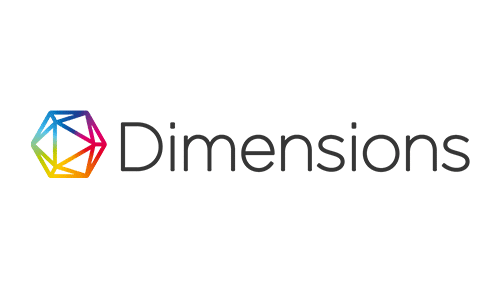POTENSI TANAMAN SAMBUNG NYAWA (Gynura procumbens) SEBAGAI ANTIHIPERURISEMIA BERDASARKAN KANDUNGAN ZAT AKTIFNYA: LITERATURE REVIEW ARTICLE
DOI:
https://doi.org/10.52434/jfb.v14i1.1344Keywords:
Antihiperurisemia, Gynura procumbens, metabolit sekunderAbstract
Hiperurisemia merupakan suatu kondisi di mana terjadi peningkatan produksi kadar asam urat di dalam tubuh. Penggunaan obat antihiperurisemia dapat menimbulkan efek samping, sehingga penggunaan obat tradisional dengan bahan alam dapat digunakan sebagai alternatif pengobatan. Oleh karena itu, diperlukan pengembangan senyawa dengan aktivitas penghambat xantin oksidase yang berasal dari tumbuhan alam dengan efek samping yang lebih rendah. Salah satunya yaitu menggunakan daun Sambung Nyawa (Gynura procumbens) sebagai antihiperurisemia. Literature review article ini bertujuan untuk mengetahui kandungan senyawa aktif Sambung Nyawa yang digunakan sebagai antihiperurisemia dengan mengkaji beberapa literatur yang berkaitan dengan hal tersebut. Pencarian literatur yang akan digunakan hanya terbatas pada senyawa aktif Sambung Nyawa sebagai antihiperurisemia yang dipublikasikan pada tahun 2011-2021. Proses pencarian dilakukan menggunakan Google Scholar, PubMed dam ScienceDirect dengan kata kunci “Gynura procumbens, antihiperurisemia, sambung nyawa, xantin oksidase, Activity flavonoid of antihyperuricemic†dan “Mechanism of flavonoids as antihyperuricemiaâ€. Hasil akhir pencarian tersebut didapatkan 7 artikel yang digunakan. Berdasarkan literature review yang telah dilakukan menunjukkan bahwa golongan flavonoid dengan kandungan senyawa aktif kuersetin, kaempferol, apigenin, myricetin dan rutin dari Sambung Nyawa yang paling banyak memiliki kemampuan sebagai antihiperurisemia yang ditandai dengan penghambatan xanthine oxidase.
References
Indrawan IB, Kambayana G, Putra TR. Hubungan konsumsi purin tinggi dengan hiperurisemia: suatu penelitian potong lintang pada penduduk suku bali di Kota Denpasar. J Penyakit Dalam Udayana [Internet]. 2017;1(1):38–44. Available from: https://jpdunud.org/index.php/JPD/article/view/20
Sattui SE, Gaffo AL. Treatment of hyperuricemia in gout: current therapeutic options, latest developments and clinical implications. Ther Adv Musculoskelet Dis. 2016;8(4):145–59.
Chen CY, Huang CC, Tsai KC, Huang WJ, Huang WC, Hsu YC, et al. Evaluation of the antihyperuricemic activity of phytochemicals from Davallia formosana by enzyme assay and hyperuricemic mice model. Evidence-based Complement Altern Med. 2014;2014:1–8.
Pokharel K, Yadav BK, Jha B, Parajuli K, Pokharel RK. Estimation of serum uric acid in cases of hyperuricaemia and gout. J Nepal Med Assoc. 2011;51(1):15–20.
Annita, Handayani SW. Hubungan diet purin dengan kadar asam urat pada penderita gout arthritis. J Kesehat Med Saintika. 2017;9(2):68–76.
Thayibah R, Ariyanto Y, Ramani A. Hiperurisemia Pada Remaja di Wilayah Kerja Puskesmas Arjasa Kabupaten Situbondo Hyperuricemia in Adolescents (16-24 Years Old) in Arjasa Primary Health Center, Situbondo Regency. Pustaka Kesehat. 2018;6(1):38–45.
Lin S, Zhang G, Liao Y, Pan J, Gong D. Dietary flavonoids as xanthine oxidase inhibitors: structure-affinity and structure-activity relationships. J Agric Food Chem. 2015;63(35):7784–94.
Umamaheswari M, Madeswaran A, Asokkumar K. Virtual screening analysis and in-vitro xanthine oxidase inhibitory activity of some commercially available flavonoids. Iran J Pharm Res. 2013;12(3):317–23.
Sumayyah S, Salsabila N. Obat tradisional: antara khasiat dan efek sampingnya. Maj Farmasetika. 2017;2(5):1–4.
Hoe SZ, Lee CN, Mok SL, Kamaruddin MY, Lam SK. Gynura procumbens Merr. decreases blood pressure in rats by vasodilatation via inhibition of calcium channels. Clinics. 2011;66(1):143–50.
Wajdie F, Kartika R, Saleh C. Uji aktivitas antihiperurisemia dari ekstrak etanol daun kluwih (Artocarpus altilis (Parkinson) Fosberg) terhadap mencit jantan (Mus musculus). J At. 2018;3(2):111–5.
Kaewseejan N, Sutthikhum V, Siriamornpun S. Potential of Gynura procumbens leaves as source of flavonoid-enriched fractions with enhanced antioxidant capacity. J Funct Foods [Internet]. 2015;12:120–8. Available from: http://dx.doi.org/10.1016/j.jff.2014.11.001
Laksmitawati DR, Firdaus R, Zein MA. in vitro and in vivo studies of antihyperuricemic and antioxidant activity from bulbs of bawang tiwai (Eleutherine Palmifolia (L.) Merr.) from Indonesia. Asian J Pharm Clin Res. 2019;12(1):497–500.
Gliozzi M, Malara N, Muscoli S, Mollace V. The treatment of hyperuricemia. Int J Cardiol [Internet]. 2016;213:23–7. Available from: http://dx.doi.org/10.1016/j.ijcard.2015.08.087
Chuang SY, Chen JH, Yeh WT, Wu CC, Pan WH. Hyperuricemia and increased risk of ischemic heart disease in a large Chinese cohort. Int J Cardiol [Internet]. 2012;154(3):316–21. Available from: http://dx.doi.org/10.1016/j.ijcard.2011.06.055
Haidari F, Keshavarz SA, Shahi MM, Mahboob S-A, Rashidi M-R. Effects of Parsley (Petroselinum crispum) and its Flavonol Constituents, Kaempferol and Quercetin, on Serum Uric Acid Levels, Biomarkers of Oxidative Stress and Liver Xanthine Oxidoreductase Aactivity in Oxonate-Induced Hyperuricemic Rats. Iran J Pharm Res. 2011;10(4):811–9.
Zhang C, Zhang G, Liao Y, Gong D. Myricetin inhibits the generation of superoxide anion by reduced form of xanthine oxidase. Food Chem [Internet]. 2017;221:1569–77. Available from: http://dx.doi.org/10.1016/j.foodchem.2016.10.136
Wang Y, Zhang G, Pan J, Gong D. Novel insights into the inhibitory mechanism of kaempferol on xanthine oxidase. J Agric Food Chem. 2015;63(2):526–34.
Zhang C, Wang R, Zhang G, Gong D. Mechanistic insights into the inhibition of quercetin on xanthine oxidase. Int J Biol Macromol [Internet]. 2018;112:405–12. Available from: https://doi.org/10.1016/j.ijbiomac.2018.01.190
Chen YS, Hu QH, Zhang X, Zhu Q, Kong LD. Beneficial effect of rutin on oxonate-induced hyperuricemia and renal dysfunction in mice. Pharmacology. 2013;92(1–2):75–83.
Huang J, Wang S, Zhu M, Chen J, Zhu X. Effects of genistein, apigenin, quercetin, rutin and astilbin on serum uric acid levels and xanthine oxidase activities in normal and hyperuricemic mice. Food Chem Toxicol [Internet]. 2011;49(9):1943–7. Available from: http://dx.doi.org/10.1016/j.fct.2011.04.029
Downloads
Published
Issue
Section
License
or all articles published in Jurnal Ilmiah Farmako Bahari, the copyright is retained by the journal. Articles are published under the terms of Creative Commons Attribution-ShareAlike 4.0 International License (CC-BY-SA 4.0) . For Authors:
|


1.png) Download Journal Template
Download Journal Template
.png)









